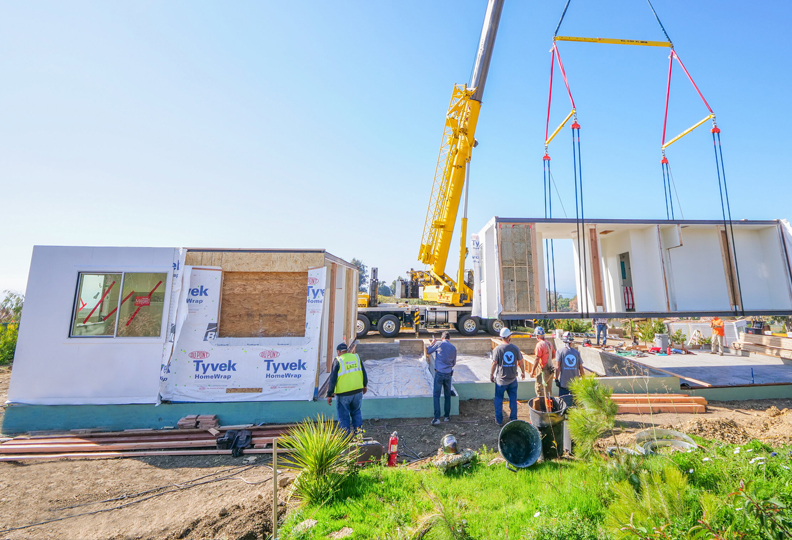Bevyhouse helped residents rebuild after the 2018 Woolsey Fire in Malibu.
By Sophie Alexander | Bloomberg
Even as fires continue to burn across Los Angeles, many of those who lost their houses are already making plans to rebuild. To overcome labor shortages and speed up the process, some are turning to prefabricated homes.
“Construction resources will be extremely limited — they’re already constrained,” said Steve Glenn, a Santa Monica resident and founder of Plant Prefab, a company that designs such homes, which are built in sections at a factory rather than being constructed entirely on-site.
Glenn, who said he’s received dozens of inquiries from LA homeowners looking to rebuild quickly, expects fire victims will make up “an incredibly significant” chunk of his business over the next couple of years as the city recovers. They’ve already done a number of projects after similar conflagrations, including the nearby Woolsey Fire in 2018.
When starting the company nearly a decade ago, “We didn’t specifically think, ‘Well, because of climate change and fires we’ll be building for more fire victims,’” said Glenn, whose firm has historically done 30 to 40 units a year. “In retrospect, that of course makes sense.”
Michael Wara, senior research scholar at Stanford University’s Woods Institute for the Environment, said much of Paradise, California, was rebuilt with prefabricated homes after the devastating 2018 Camp Fire. He expects the same in Los Angeles.
“There are not enough general contractors in Los Angeles to rebuild 12,000 structures in addition to all the other work,” he said. “Solutions where you can build most of the homes somewhere else not subject to the labor constraint that will affect Los Angeles could be particularly attractive.”
Fire Hardened
California politicians have pledged to make it easier for residents to rebuild by suspending environmental reviews, waiving green construction mandates and promising to expedite permits. Replacement dwellings, however, must still comply with state building codes designed to make them less likely to burn, which require exteriors be clad in fire-resistant materials and screens installed over vents to prevent wind-blown embers from entering.
Because post-disaster rebuilding is a relatively new and unplanned part of the business, few prefab companies have focused on building homes that are hardened against fire risk.
“The conventional way of building is with wood,” said Joseph Tanney, founding partner of New York-based luxury prefab company Resolution: 4 Architecture, which has received a half-dozen calls in the past week from LA fire victims. “Building a fire-resistant home is something you’re going to see a lot more of.”
Read more (subscriber content)
Some stories may only appear as partial reprints because of publisher restrictions.

